No airing cupboard? No problem. Here's how to dry and store towels and bedding without one
After some alternative airing cupboard ideas? Explore our expert solutions for storing and drying towels to keep them fresh
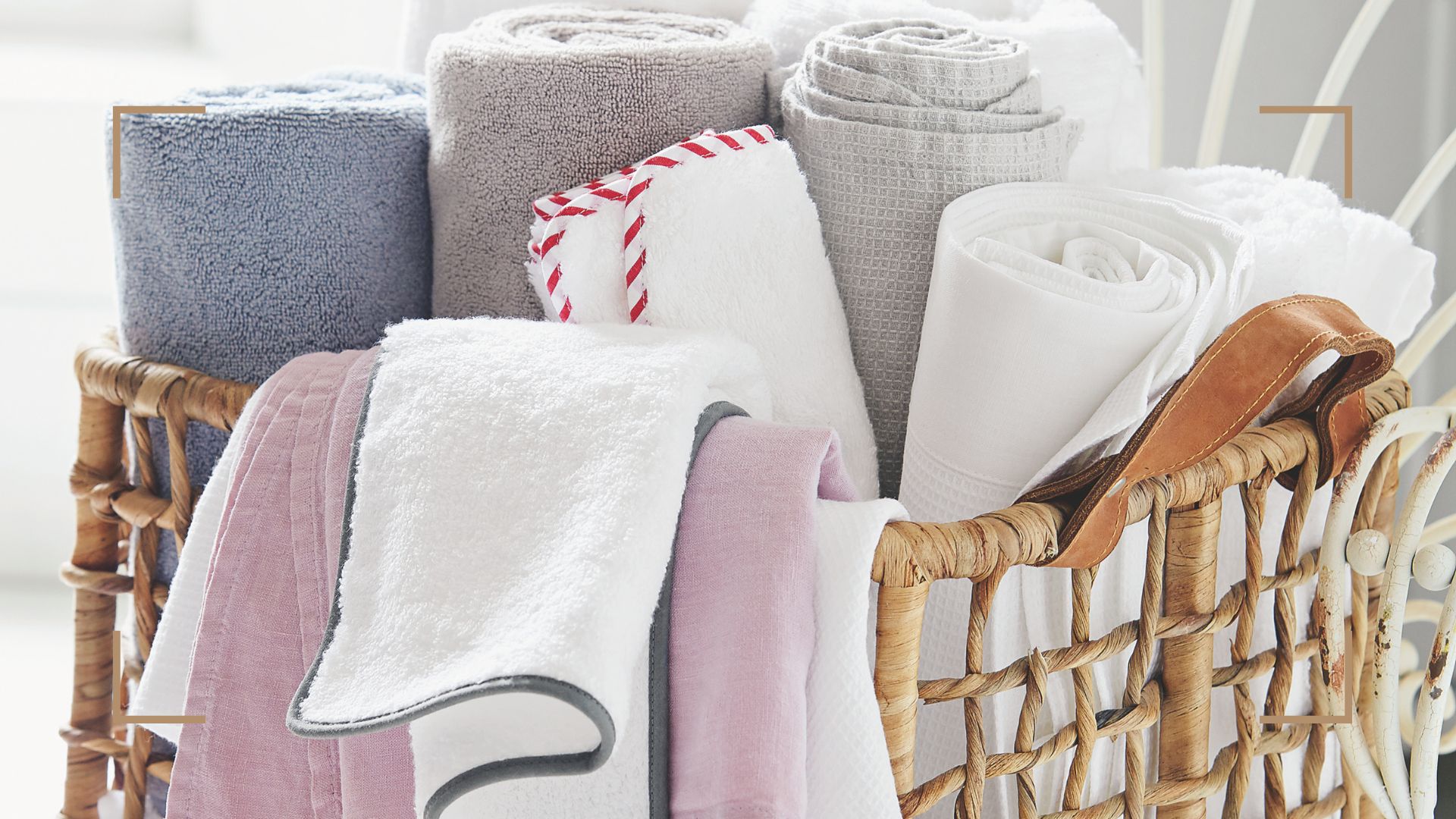

What to do if you don't have an airing cupboard? This is a dilemma commonly faced by homeowners struggling to find space to fit one into their house, yet there are plenty of alternative airing cupboard ideas that can help overcome the problem.
In some cases it might be possible to repurpose a cupboard somewhere else in the house, turning it into a space to store bulky towels and bedding when not in use. But there is a knack for ensuring the space works in the same way as a dedicated airing cupboard, which will often incorporate some form of heating and good ventilation to help dry laundry indoors.
We asked a range of home organisation experts for their advice on dealing with the problem while still following a few bathroom design rules – and thankfully they shared loads of helpful tips.
Alternative Airing cupboard ideas
There are many options for homeowners with no airing cupboard – some of which might be right under your nose. Our expert guide is here to help with a variety alternatives.
What is an airing cupboard?
Before exploring the alternatives, let's clarify exactly what constitutes an airing cupboard.
In short, this is a warm cupboard in which to place clothes, towels, and bedding that has been washed but is still a little damp to let them dry out completely. The warmth is usually due to the fact that these cupboards also house a hot water tank.
However, with more and more homes now relying on combination boilers, hot water tanks are not always a feature of modern houses, meaning that airing cupboards are not always present.
Sign up for the woman&home newsletter
Sign up to our free daily email for the latest royal and entertainment news, interesting opinion, expert advice on styling and beauty trends, and no-nonsense guides to the health and wellness questions you want answered.
1. Add shelving around your hot water tank
If you do live in a house with a hot water tank, things are going to be easier than for someone without one. Creating an airing cupboard might just be a case of upgrading and reorganising what you already have, as well as getting to grips with how to declutter your bathroom.
"Traditionally, airing cupboards are built around the hot water tank to make use of the warmth it generates," explains Laura Price, founder and creative director at The Home Organisation. "If your hot water tank is stored in an accessible cupboard with some storage space around it, consider adding shelves to make better use of this area."
While this is the most straightforward way of getting an airing cupboard, there are a few points to be aware of.
"It’s essential to seek professional advice before installing shelving, to avoid blocking any safety features of the tank and to allow sufficient ventilation," points out Laura Price.

Laura is the founder and director at The Home Organisation. After a career in PR for national events and with three young children, she realized that creating organized spaces brought her moments of calm in a busy life. With a vision to help many others experience the benefits of living an organized life, The Home Organisation was born.
2. DIY an airing cupboard

Even if you don't have a hot water tank, it is still possible to make your own airing cupboard.
In so many cases there are built-in cupboards within homes that are used as nothing more than dumping grounds for all the bits and bobs we don't know what to do with when they could, in fact, be turned into an airing cupboard with a few simple tweaks.
If you like this idea, do be sure to explore how to prevent mould in wardrobes as damp clothes can mean this becomes an issue.
"Without an airing cupboard, towels can still be stored in several places around the home, but it’s convenient if they are stored close to the bathroom," advises Laura Price. "The most important factor is that the storage area is both clean and dry. If you’re using a built-in cupboard, check the walls for any signs of damp and avoid particularly cold cupboards, as this can invite moisture and make them unsuitable for towel storage.
"If you have any unused storage cupboards, you could install a low-wattage tubular heater, which takes up minimal space but provides consistent warmth efficiently," continues Laura. "The best dehumidifiers with heating functions are also available and can gently warm the air while removing excess moisture."

RRP: £149.99 | Dehumidifiers are useful for a range of things – eliminating condensation, reducing the chance of damp and mould and, of course, getting wet laundry dry faster. If you still aren't convinced, then bear in mind too that they use far less electricity than tumble dryers.
"A wardrobe or cabinet with good airflow is ideal for storing towels when they’re not in use," says Tina Priestly, home organisation expert at Ready, Set, REFRESH. "Consider stacking them in fabric-lined bins on shelves or using clear plastic containers for easy visibility. Adding a small lavender sachet can help keep towels smelling fresh and prevent any musty odours."
"To create your airing cupboard, think about using a small, unused wardrobe or a section of a larger storage space," adds Tina. "Adding shelves and a curtain or door can help create a simple, enclosed area. For example, a narrow hallway cupboard or even a pantry with some extra room could be transformed into a tidy storage spot for linens."

Tina, founder of Ready, Set, REFRESH!, embarked on her journey into home decluttering and design during the pandemic, leading her to establish Our Inspiration. Her approach combines craftsmanship, sustainability, and a commitment to client satisfaction. With a focus on creating clutter-free, relaxing spaces, Tina helps clients declutter, reorganise, and refresh their homes.

RRP: £29.49 | If you have a cupboard earmarked to use as an airing cupboard, a tubular heater such as this will instantly transform it into the perfect spot for drying and storing towels and bedding. This one is designed to be wall-mounted and offers gentle, background heat.
3. Invest in a heated clothes airer

If the lack of an airing cupboard means that you are going to struggle to get towels and bedding fully dry, a heated airer is going to come in so useful.
"Drying racks that fold up, like a pop-up clothes horse, can be set up anywhere and put away when not needed, saving space," says Tina Priestly.
Be on the lookout for those that are on the larger side if you need them for towels and sheets and in particular pay attention to their height so that you won't be draping them on the floor where they could get dirty.
The Dry:Soon Heated Towel Airer is perfect for those short on space but in need of somewhere to fully dry and air towels and sheets.

RRP: £179.99 | Despite offering 21m2 worth of clothes drying space, when folded, this three-tier heated airer is just 9cm wide so can easily be slotted behind a door for storage. Another handy feature is that it can be set to run on a timer so you won't be wasting electricity
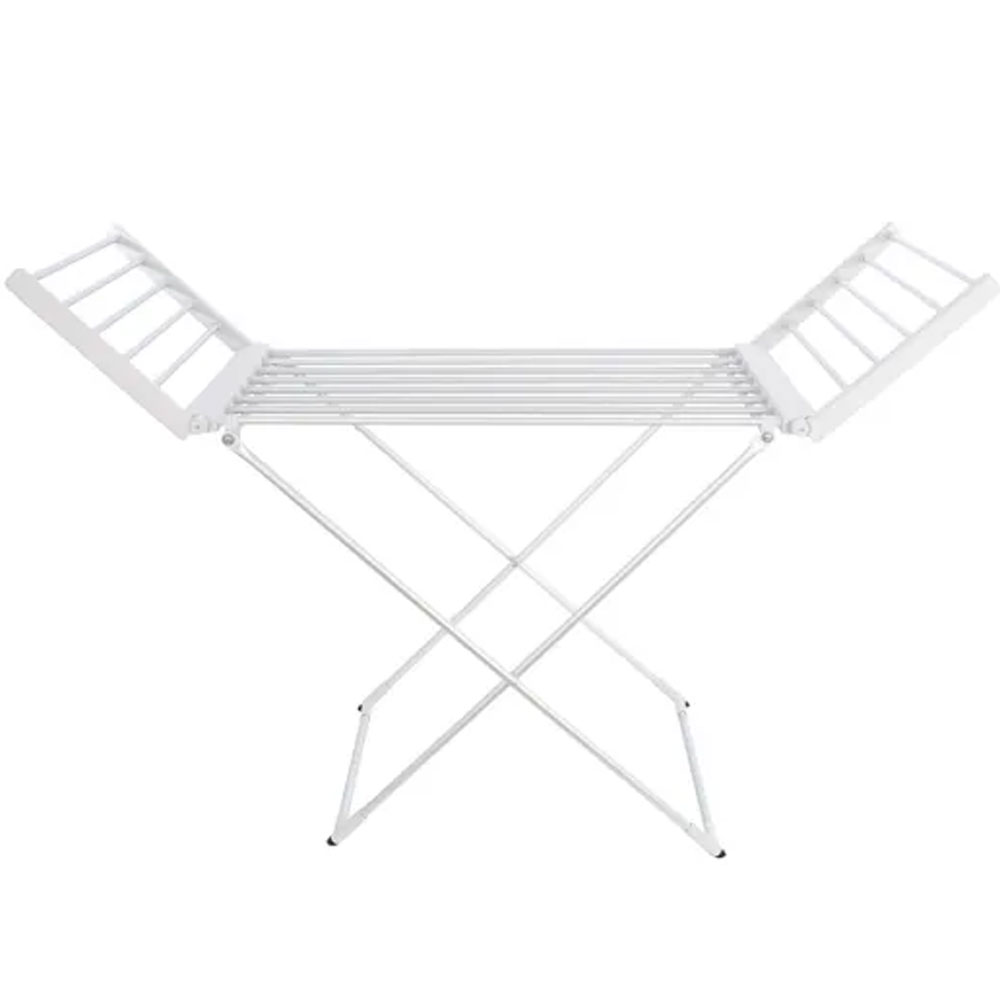
RRP: £59.99 | Despite its compact proportions, this heated winged airer is capable of holding up to 15kg of damp items. It costs just 6p/hour to run and is easy to fold up and store when not in use – plus it is sturdier than some other winged airer designs.

RRP: £119.95 | The height of this three-tier heated airer would work well for items like towels and sheets, but we also love the shelf design which would be perfect for folding, airing and storing all kinds of items in the absence of an airing cupboard.
4. Use a dehumidifier with a laundry mode

Dehumidifiers are a brilliant way not only of keeping damp and mould at bay from all around the house, but if you are also asking 'Is a dehumidifier good for drying clothes?' then the answer is yes. And they can also get towels and bedding dry faster.
Models with laundry drying modes work by filtering moisture out of the room in which they are placed before blowing it back into the space at a warmer temperature.
In order to get the most out of them, you should place them in a room, near to where the wet items are hanging on a rack, and close the door.

The cool thing about dehumidifiers is that they can be used as a clothes dryer, which helps keep costs down. And this EcoAir dehumidifier is the best for drying clothes quickly. The Desiccant 8L features three drying modes and two laundry.
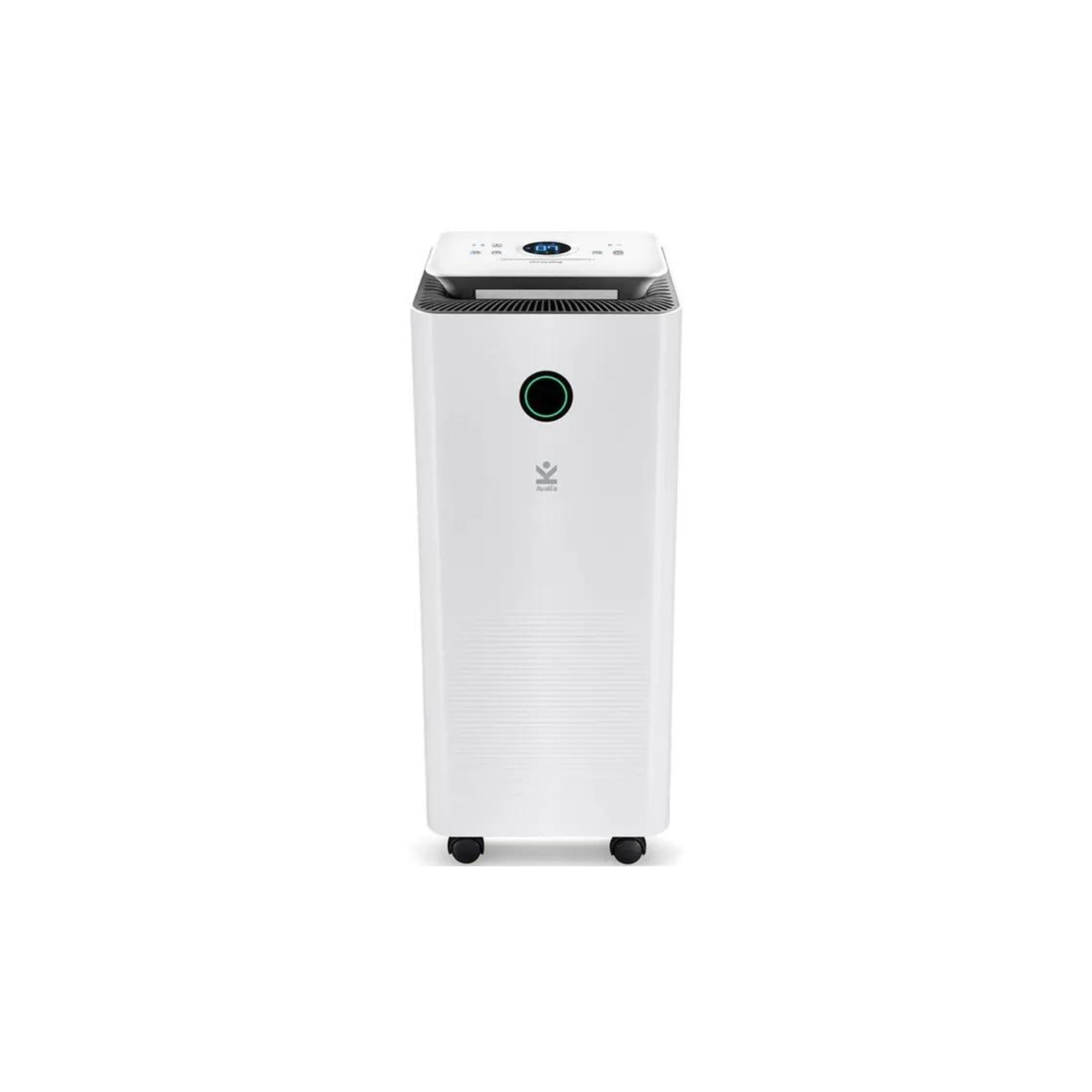
If you're looking for a dehumidifier that's large enough to hold at least 16L of water, sleek, space-saving, and will dry your laundry, the Avalla X-150 is your perfect match. Rated the overall best on our list, this machine left the air in our home clean and moisture-free.
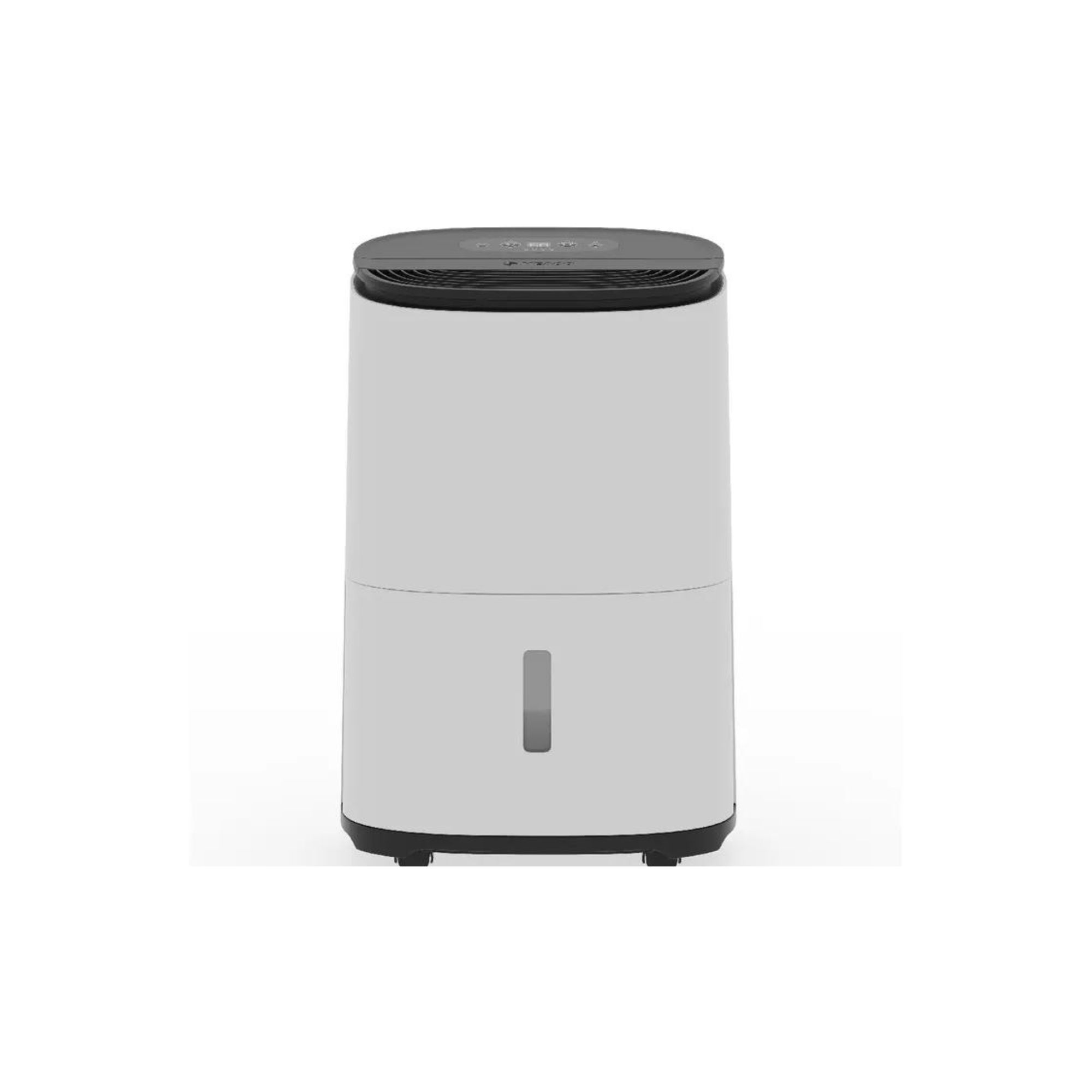
The MeacoDry Arete One is an all-around great dehumidifier. It's simple, easy to use, great for families with little ones, and quiet. It even has a laundry mode, handling your home's moisture and wet clothes.
5. Convert part of your utility room
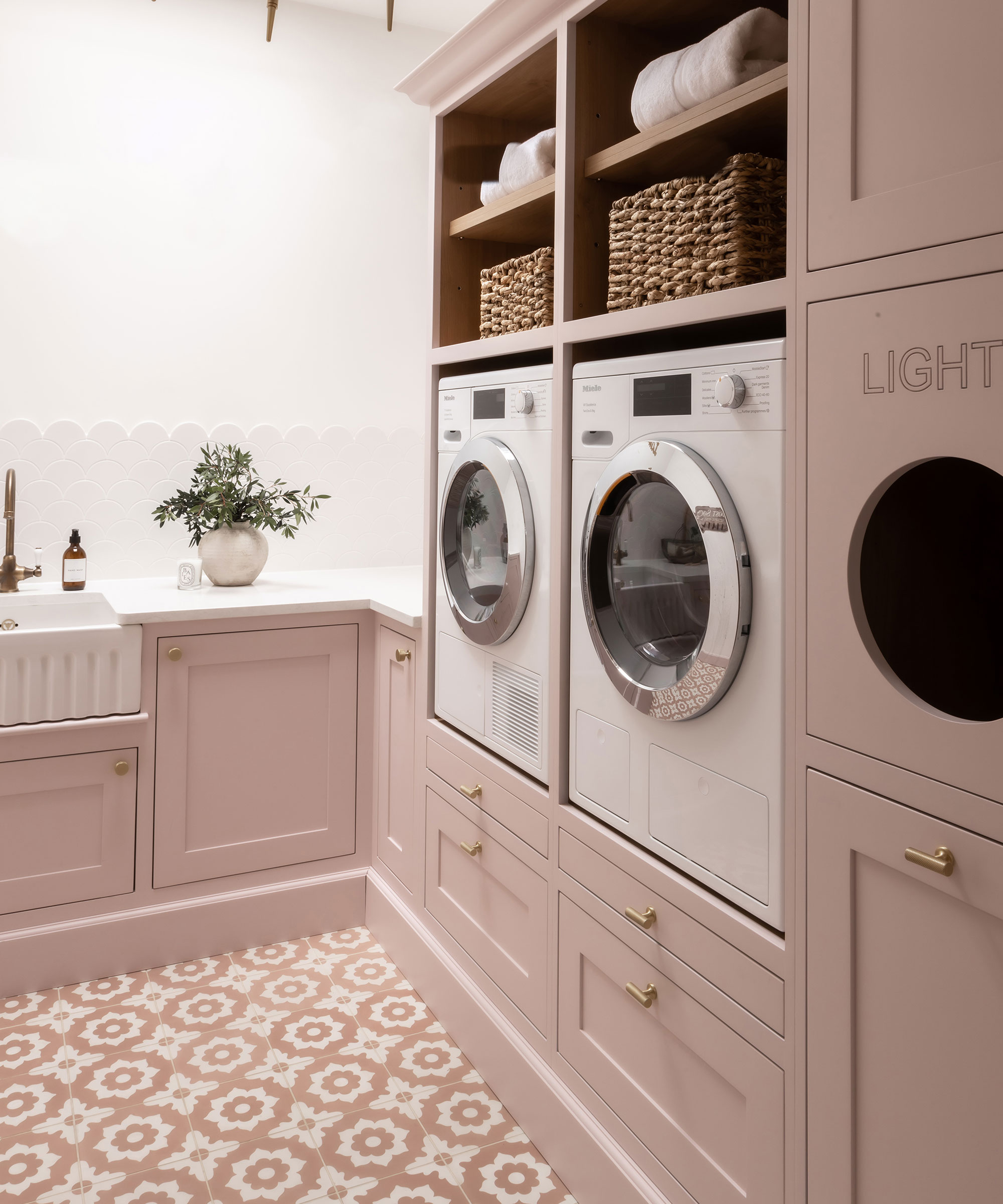
If you have a utility room you have a great opportunity to use a section of it for an airing cupboard.
"One of the best and easiest alternatives to an airing cupboard is converting part of your laundry area into a storage area where you can keep your towels and bedding," explains Timothy Wood, founder and CEO of Fix It Today. "Installing open shelving in this space has the same effect as an open-style airing area, and it's also stylish now that open shelving is making a comeback.
"You can also add a foldable drying rack in the space so that you can dry wet towels on it," continues Timothy. "Foldable ones are great because you can always move them near a radiator if it becomes too cold or humid to dry towels quickly."
Ceiling clothes airers are a small space essential that can be winched up to the ceiling in order to air clothes are great for those after small laundry room ideas.

RRP: £39.99 | Ceiling-mounted clothes airers, operated using a pulley system, are just so useful when you are short on space as they can be hoisted up out of the way. This one comes with everything needed for installation included and is ideal for hanging sheets and towels.
FAQs
How to store towels without an airing cupboard?

One of the biggest issues that comes with the lack of an airing cupboard is how to store towels and larger items of bedding, such as sheets and duvet covers in a way that keeps them smelling fresh and feeling clean and that still ties in with the latest bathroom trends.
"Typically, a cupboard with shelves is the most convenient option, where towels and bedding can be neatly folded directly onto the shelves or contained within fabric baskets," says Laura Price.
Storage bags can also come in handy when trying to store bedding and towels in a way that takes up minimal space, but do try to look out for those made from breathable fabrics.
"Vacuum-sealed bags are excellent for storing bulky bedding and saving space; these can easily fit under the bed or in a closet," explains Tina Priestly. "Under-bed storage boxes with wheels are also handy – just slide them out when you need fresh bedding. If you’re using a wardrobe, try large fabric bins for bedding and label them to keep sheets and blankets organised by size or season."

RRP: £16.74 | This set of two storage bags has so much to offer. Not only are the bags made from sturdy, yet breathable, canvas, but they are also designed to be fitted with natural red cedar panels (sold separately) that help clothes smell fresh and repel moisture and insects.

RRP: £24.99 | Measuring a roomy 21cm H x 42cm W x 30cm D, this storage basket is perfect for stowing away towels and bedding in a way that air can circulate. The handles make it easy to take the basket down from shelves and the design is stylish enough to keep on display.

RRP: £35.99 | The design of this set of four linen organisers makes so much sense. Being made from linen makes them breathable, while the see-through panels make it easy to spy on what's inside. They also come complete with labels, plus can be folded away when not in use.
Where should towels be stored when not in use?
Towels and bedding are both bulky items and without a dedicated cupboard to keep them fresh and dry it can be hard to know what to do with them.
"If space is tight, consider storing extra towels in a wardrobe or cupboard with dehumidifying options like moisture-absorbing sachets," suggests interior designer and event stylist Bree Steele from RJ Living. "Baskets or bins with breathable fabric liners are ideal for wardrobes that lack ventilation. Otherwise, open shelving in the bathroom can be convenient and keeps towels easily accessible."
Careful styling of bathroom shelves is a great way to make a bathroom look expensive on a budget, particularly if you stack them with piles of fluffy towels interspersed with moisture-loving plants.

Bree Steele is an experienced interior designer and event stylist with over a decade of experience. She specialises in sophisticated, functional spaces and excels at creating custom furniture fit-outs. Having designed over 100+ properties, including residential homes, commercial spaces, and Airbnb's, Bree's passion for transforming spaces runs deep.

Price: £12.99 | Containing silica gel desiccant, a highly absorbent material, these handy little bags will deal with excess moisture speedily and are small enough for cupboards of all sizes. Containing 30 packs, each sachet can be rejuvenated in the microwave, making them great value for money.
How to dry towels with no airing cupboard?

Without an airing cupboard, be sure that you aren't committing any laundry drying mistakes that could cause damage to your towels or your home.
"After washing, it’s essential to fully dry your towels to prevent mould and the towels smelling," says Laura Price. "In the warmer months, towels can be line-dried outdoors or hung on an airer. During cooler months, consider tumble drying them, or use a dehumidifier to help remove moisture when towels are drying on an airer."
"Without an airing cupboard, you can air-dry towels on a heated towel rack or rail, which keeps them warm and ready for use," adds Bree Steele. "Another option is to hang them in a well-ventilated room with an open window or use an over-the-door drying rack for easy airflow. You can also dry towels with a foldable drying rack near a heat source. Just be careful not to drape them over the heater as that’s a fire hazard."
Without an airing cupboard, the laundry room organisation ideas you use are more important than ever, so make sure you are making most of all the space you have available to avoid having to drape wet clothes and towels around the house.

Natasha Brinsmead is a freelance homes and interiors journalist with over 20 years experience in the field. As former Associate Editor of Homebuilding & Renovating magazine, Natasha has researched and written about everything from how to design a new kitchen from scratch to knocking down walls safely, from how to lay flooring to how to insulate an old house. She has carried out a number of renovation projects of her own on a DIY basis and is currently on the lookout for her next project.
-
 Whenever I wear this lipstick, I'm asked what shade it is - I think I've found the perfect nude
Whenever I wear this lipstick, I'm asked what shade it is - I think I've found the perfect nudeAfter years of searching, our beauty writer reveals the butter-soft pink-brown lipstick she wears every single day
By Annie Milroy Published
-
 Sarah Jessica Parker's trending Coach Kisslock bag is back in the spotlight – and I've found the best high-street lookalike
Sarah Jessica Parker's trending Coach Kisslock bag is back in the spotlight – and I've found the best high-street lookalikeVintage-inspired and endlessly versatile, this bag is having a major moment
By Molly Smith Published